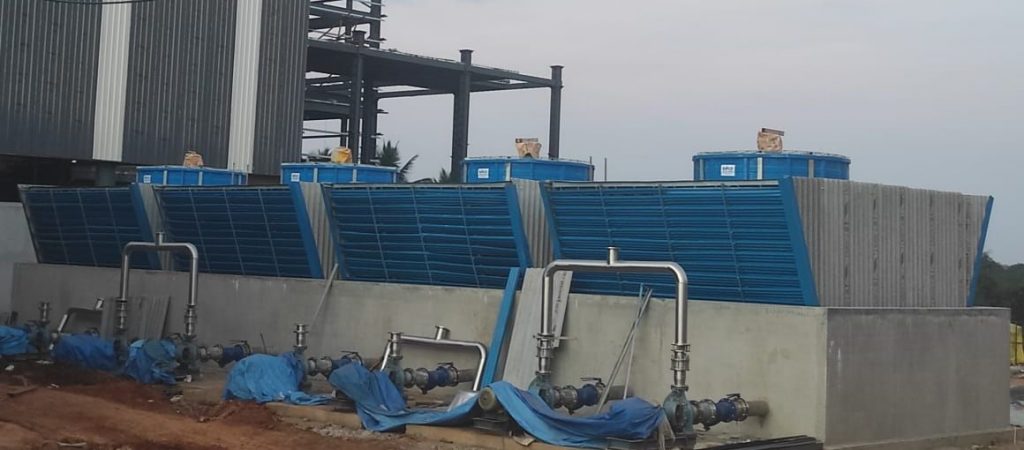Materials of Construction for Wooden Cooling Towers
Wooden cooling towers are primarily built using naturally durable, rot-resistant wood, combined with other materials for structural support and performance enhancement. Below is a detailed breakdown:
. Wood Types Used in Construction
Wooden cooling towers typically use high-quality, treated lumber that resists water, decay, and insects:
A. Redwood (Sequoia sempervirens)
- Why Used?
- Naturally resistant to rot, fungi, and termites due to high tannin content.
- Excellent dimensional stability (minimal warping).
- Applications:
- Structural framing, casing, and fill supports.
B. Cedar (Western Red Cedar or Cypress)
- Why Used?
- Natural oils prevent moisture absorption and microbial growth.
- Lightweight yet strong.
- Applications:
- Louvers, decking, and smaller structural components.
C. Treated Pine (Southern Yellow Pine, Pressure-Treated)
- Why Used?
- Chemically treated with ACQ (Alkaline Copper Quaternary) or CCA (Chromated Copper Arsenate) for decay resistance.
- More cost-effective than redwood or cedar.
- Applications:
- Support beams, framing, and fill media slats (if untreated wood isn’t viable).
2. Non-Wood Materials (Complementary Components)
While the main structure is wood, other materials are used for critical parts:
A. Fill Media (Heat Exchange Surface)
- Traditional: Wooden slats (redwood/cedar splash bars).
- Modern Alternatives:
- PVC (Polyvinyl Chloride) fills – More efficient, lightweight, and resistant to scaling.
- PP (Polypropylene) fills – Used in chemically aggressive environments.
B. Structural Fasteners & Hardware
- Stainless Steel (Grade 304/316) – For bolts, nails, and supports (resists rust).
- Galvanized Steel – Used in less corrosive areas (cheaper than SS).
C. Drift Eliminators
- PVC or PP plastic – Efficiently traps water droplets.
D. Fan Blades & Mechanical Parts
- FRP (Fiberglass-Reinforced Plastic) – Lightweight, corrosion-resistant.
- Aluminum – Used in some induced-draft fans.
E. Water Distribution System
- PVC or HDPE Pipes – Resistant to scaling and chemicals.
- Stainless Steel Nozzles – For spray distribution.
. Protective Treatments & Coatings
To extend lifespan, wooden cooling towers often receive:
- Creosote or Pentachlorophenol (Penta) Treatment – Prevents fungal decay.
- Copper-Based Preservatives (ACQ, CCA) – Protects against termites and rot.
- Water-Repellent Sealants – Reduces moisture absorption.
4. Why Wood is Preferred Over Metal/Concrete?
| Material | Advantages in Cooling Towers | Disadvantages |
| Wood | ||
| FRP (Fiberglass) | ||
| Concrete | ||
| Steel (Galvanized) |
. Maintenance Considerations for Wooden Towers
- Regular Inspections: Check for wood decay, cracks, or fungal growth.
- Chemical Treatments: Reapply preservatives every 5–10 years.
- Fill Media Cleaning: Remove scale, algae, and debris.
- Hardware Checks: Replace corroded fasteners with stainless steel.
